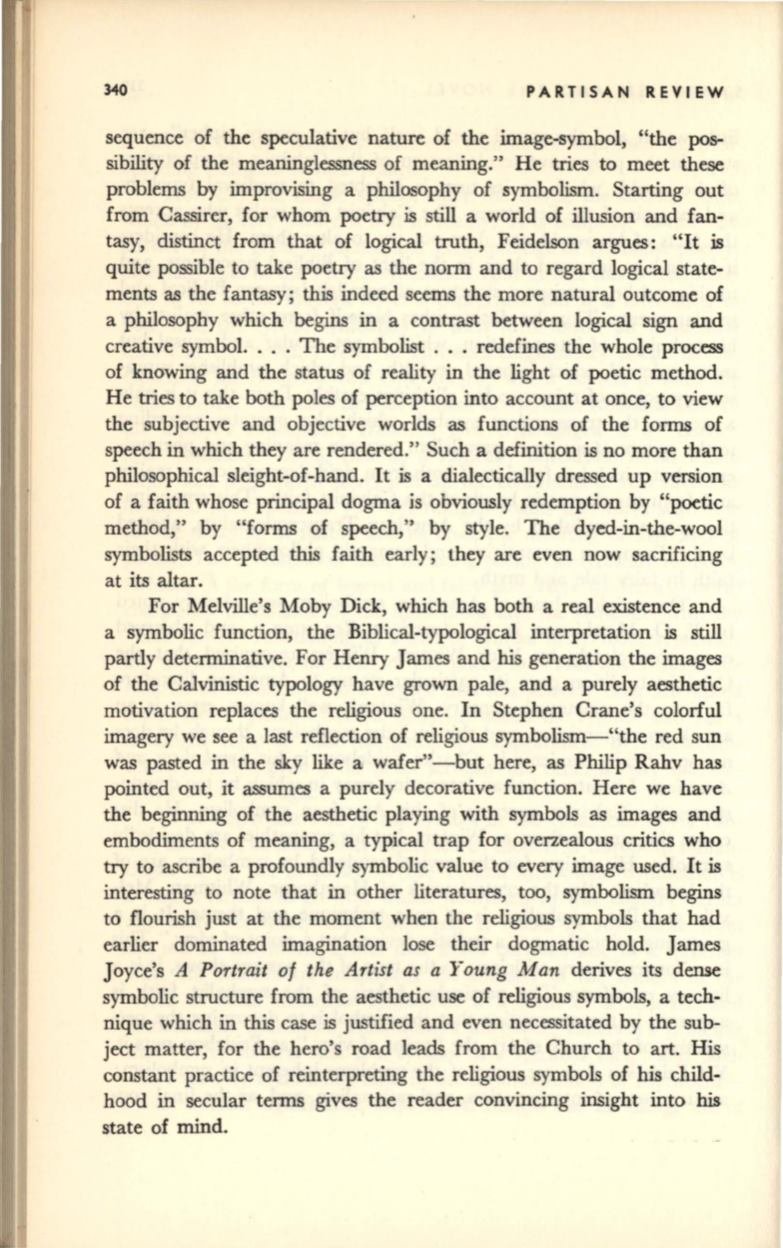
PARTISAN REVIEW
sequence of the speculative nature of the image-symbol, "the
pos–
sibility of the meaninglessness of meaning." He tries to meet these
problems by improvising a philosophy of symbolism. Starting out
from Cassirer, for whom poetry is still a world of illusion and fan–
tasy, distinct from that of logical truth, Feidelson argues: "It is
quite possible to take poetry as the norm and to regard logical state–
ments as the fantasy; this indeed seems the more natural outcome of
a philosophy which begins in a contrast between logical sign and
creative symbol. . . . The symbolist . . . redefines the whole process
of knowing and the status of reality in the light of poetic method.
He tries to take both poles of perception into account at once, to view
the subjective and objective worlds as functions of the forms of
speech in which they are rendered." Such a definition is no more than
philosophical sleight-of-hand.
It
is a dialectically dressed up version
of a faith whose principal dogma js obviously redemption by "poetic
method," by "forms of speech," by style. The dyed-in-the-wool
symbolists accepted this faith early; they are even now sacrificing
at its altar.
For Melville's Moby Dick, which has both a real existence and
a symbolic function, the Biblical-typological interpretation is still
partly determinative. For Henry James and his generation the images
of the Calvinistic typology have grown pale, and a purely aesthetic
motivation replaces the religious one.
In
Stephen Crane's colorlul
imagery we see a last reflection of religious symbolism-"the red sun
was pasted in the sky like a wafer"- but here, as Philip Rahv has
pointed out, it assumes a purely decorative function. Here we have
the beginning of the aesthetic playing with symbols as images and
embodiments of meaning, a typical trap for overzealous critics who
try
to ascribe a profoundly symbolic value to every image used.
It
is
interesting to note that in other literatures, too, symbolism begins
to flourish just at the moment when the religious symbols that had
earlier dominated imagination lose their dogmatic hold. James
Joyce's
A Portrait of the Artist as a Young Man
derives its dense
symbolic structure from the aesthetic use of religious symbols, a tech–
nique which in
this
case is justified and even necessitated by the sub–
ject matter, for the hero's road leads from the Church to art. His
constant practice of reinterpreting the religious symbols of his child–
hood in secular terms gives the reader convincing insight into his
state of mind.


